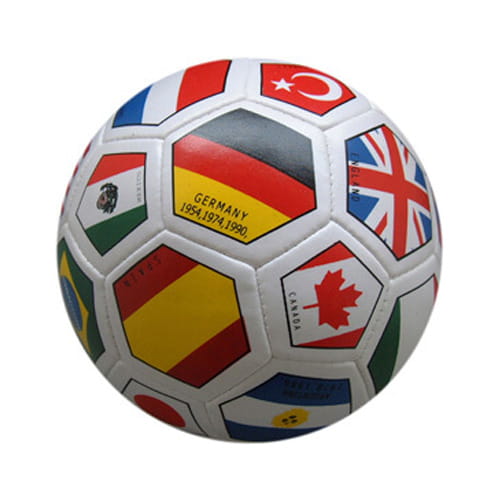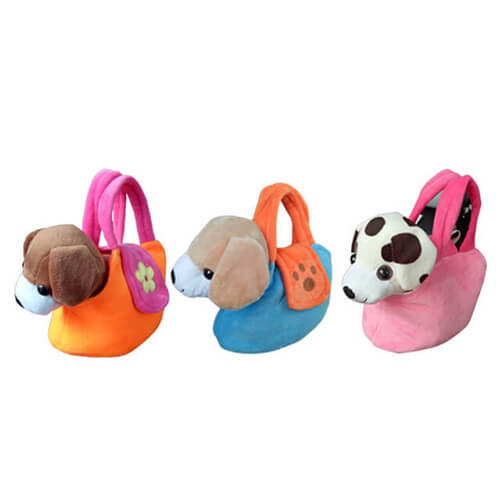 admin
admin
 Apr 20,2018
Apr 20,2018

In addition to safety (see Safety and Children\'s Toys below), good toys for young children need to match their development stage and emerging capabilities. Many safe and appropriate game materials are usually free items found at home. Carton boxes, plastic bowls and lids, plastic bottle caps and other “treasures” can be used in a variety of ways by children of different ages. When you read the following list of toys recommended for children of different ages, keep in mind that each child develops at an individual speed. A list of items - as long as they are safe - may be a good choice for children younger and older than the recommended age group.
Toys for young babies - born through 6 months
Babies like to watch people - follow them with their eyes. Usually, they like beautiful appearance and vivid colors. Babies can reach, fascinated by what their hands and feet can do, raise their heads, turn their heads, listen to things, put things in their mouths, and so on.
Good toys for young babies:
They can reach for, hold, suck, shake, and create noise - rattles, rings, squeeze toys, teaching toys, soft dolls, texture balls, and vinyl and board books.
Listen to nursery rhymes and poetry books, recordings of lullabies and simple songs.
Look at the things - picture of the hanging face so that the baby can see them and the indestructible mirror.
Toys for older babies - 7 to 12 months
Older babies are movers—typically they go from rolling over and sitting, to scooting, bouncing, creeping, pulling themselves up, and standing. They know their own names, and other common words, can recognize body parts, find hidden objects, and objects into a container and release.
Good toys for older babies:
Play and pretend things - dolls, puppets, plastic and wood with wheels vehicles, and water toys.
And may throw things out - plastic bowls, beads, balls and nesting toys.
With a large soft blocks and wooden cube making things.
The use of large muscles have something big ball, push and pull toys, as well as low and soft stuff can climb.
1 year old child toy
The one-year-old child is busy! Often they can walk steadily, and even climb stairs. They like to try - but adults need to stay safe.
1-year-old children\'s toys:
Print books with photos of simple illustrations or real objects;
Recording songs, rhymes and simple stories and pictures;
Things made with a wide range of non-toxic washable markers, crayons and large paper;
Things to pretend with—toy phones, dolls and doll beds, baby carriages and strollers, dress-up accessories (scarves, purses), puppets, stuffed toys, plastic animals, and plastic and wood “realistic” vehicles;
Something built from cardboard and wooden blocks (can be 2 to 4 inches smaller than babies);
Use sized muscle stuff - puzzles, spike boards, toys with parts (dial, switches, knobs, lids) and balls.
2-year-old children\'s toys (toddlers)
Young children are learning languages quickly and have a sense of danger. Nevertheless they do a lot of physical “testing”: jumping from heights, climbing, hanging by their arms, rolling, and rough-and-tumble play. They have good control over their opponents and fingers and like to do things with small objects.
Good toys for 2 year old children:
Things for solving problems—wood puzzles (with 4 to 12 pieces), blocks that snap together, objects to sort (by size, shape, color, smell), and things with hooks,
buttons, buckles, and snaps;
Things for pretending and building—blocks, smaller (and sturdy) transportation toys, construction sets, child-sized furniture (kitchen sets, chairs, play food), dress-up clothes, dolls with accessories, puppets, and sand and water play toys;
Things to create with—large non-toxic, washable crayons and markers, large paintbrushes and fingerpaint, large paper for drawing and painting, colored construction paper, toddler-sized scissors with blunt tips, chalkboard and large chalk, and rhythm instruments;
Picture books with more details than books for younger children;
CD and DVD players with a variety of music (of course, phonograph players and cassette recorders work too!)
Things for using their large and small muscles—large and small balls for kicking and throwing, ride-on equipment (but probably not tricycles until children are 3), tunnels, low climbers with soft material underneath, and pounding and hammering toys.
3 to 6 year old children\'s toys (preschoolers and kindergartens)
Preschool and kindergarten learning time is longer than young children. Usually they will say a lot and ask a lot of questions. They like to try something and are constantly showing their physical skills. They like to play with friends—and don’t like to lose! They can use it on a rotating basis - sharing a toy with two or more children can usually be used for older preschoolers and kindergartens.
Good toys 3 to 6 years old:
Things for solving problems—puzzles (with 12 to 20+ pieces), blocks that snap together, collections and other smaller objects to sort by length, width, height, shape, color, smell, quantity, and other features—collections of plastic bottle caps, plastic bowls and lids, keys, shells, counting bears, small colored blocks.
Things for pretending and building—many blocks for building complex structures, transportation toys, construction sets, child-sized furniture (“apartment” sets, play food), dress-up clothes, dolls with accessories, puppets and simple puppet theaters, and sand and water play toys.
Things to create with—large and small crayons and markers, large and small paintbrushes and fingerpaint, large and small paper for drawing and painting, colored construction paper, preschooler-sized scissors, chalkboard and large and small chalk, modeling clay and playdough, modeling tools, paste, paper and cloth scraps for collage, and instruments—rhythm instruments and keyboards, xylophones, maracas, and tambourines.
Picture books with even more words and more detailed pictures than toddler books.
CD and DVD players with a variety of music (of course, phonograph players and cassette recorders work too!).
Things for using their large and small muscles—large and small balls for kicking and throwing/catching, ride-on equipment including tricycles, tunnels, taller climbers with soft material underneath, wagons and wheelbarrows, plastic bats and balls, plastic bowling pins, targets and things to throw at them, and a workbench with a vise, hammer, nails, and saw.
If a child has access to a computer: programs that are interactive (the child can do something) and that children can understand (the software uses graphics and spoken instruction, not just print), children can control the software’s pace and path, and children have opportunities to explore a variety of concepts on several levels.
Safety and children\'s toys
Children\'s safety toys are well-made (no sharp parts or debris, no pinching); coated with non-toxic, lead-free paint; shatterproof; and easy to clean.
Electric toys should be “UL certified.” Be sure to check the label, which should indicate that the toy has been approved by Underwriters Laboratories. In addition, when selecting toys for children under 3 years of age, make sure that there are no small parts or pieces that may be trapped in the child\'s throat and cause suffocation.
It is important to remember that typical wear and tear can lead to dangerous toys that once were safe. Adults should always check the toys to ensure that they are well maintained.

